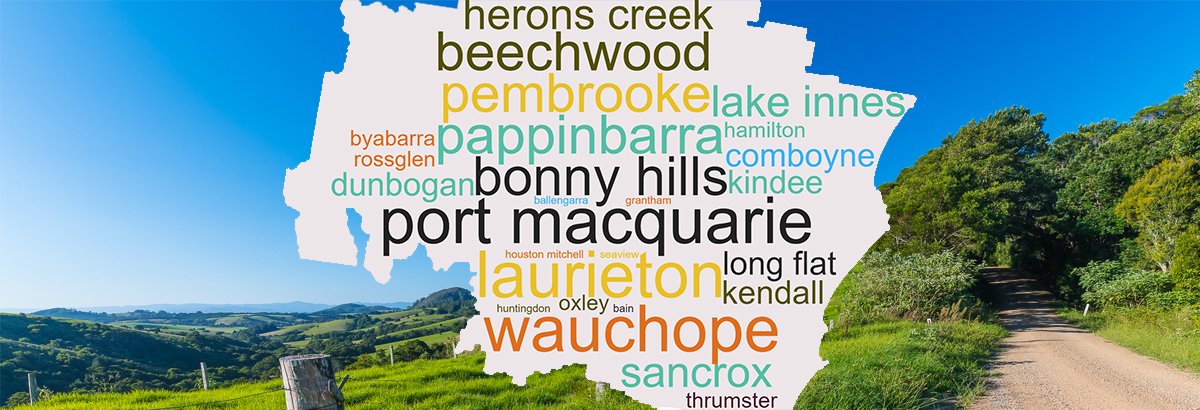
Prior to the European occupation of Australia, the indigenous population had a practical naming system that was linked closely to the beliefs, daily practices or observations of the individual language groups. Names could relate to food sources, sounds or other natural phenomena, spiritual beliefs or where events had taken place.
The Aboriginal people had an oral tradition so names were never recorded using a writing system. Consequently, when the Europeans tried to record the Aboriginal names for locations, animals etc. they had to do so phonetically and the written result could vary according to the sounds heard by the transcriber. This resulted in the same location having various spellings recorded, or the same name could be spelled different ways in different locations. While many of the Aboriginal names for locations were preserved by the Europeans many others were lost as the colonisers proceeded to name and map the lands that they explored and settled.
The early European settlers had their own naming conventions usually based on honouring royalty, politicians, government administrators, family members etc. Also names from the ‘old country’ were used such as Ennis and Thrumster. Names like Tacking Point related to an incident or occurrence. Later names were adopted through accepted usage e.g. Owens Waterhole, Wharf Road, or names of settlers e.g. Andersons Lane, or geographical features such as Beechwood, Big Hill etc. Names were often ascribed, as in the Aboriginal naming systems, by activities as well. Placenames such as Limeburners, Treachery Plains or Cedar Cutters Plains reflect early land use or activities.
Today the Geographical Names Board has standardised the naming of locations and also the spelling conventions. The Geographical Names Board of New South Wales (GNB) was established in 1966 as the official body for naming and recording details of places and geographical names in New South Wales. ‘Place’ means any geographical or topographical feature or any district, division, locality, region, city, town, village, settlement, railway station or school or any other place within New South Wales, but does not include any road, any local government area, urban area, county district or electoral district. Since 1966 persons or organisations wanting to name a place must request permission to use that name from the GNB.
Names for roads, streets etc. fall into a different category. The NSW Online Road Naming System was developed by Land and Property Information (LPI) in collaboration with the Local Government Address Working Group to streamline the road naming process. The system is designed for use by road naming authorities in New South Wales (NSW), particularly local government.
Placenames of the Port Macquarie District by Ian Symonds (with additions by Lois Coombes) provided a starting point for this listing. It has been expanded by incorporating a number of publications from Port Macquarie-Hastings Council. It also incorporates data from the Geographical Names Board (GNB) and the Australian National Placenames Survey.
The Library welcomes input from the community where people are able to extend the information contained herein or to offer substantiated corrections or additions to the work.
References
Books
- Boswell, Annabella. Annabella Boswell’s journal: an account of early Port Macquarie (1965)
- Dawson, Tony. Estate Names of the Port Macquarie and Hastings region (1830-1840) (2014)
- McLachlan, Iaen. Place of Banishment: Port Macquarie 1818-1832 (1988)
- Parker, Henry H. Mrs. Early days at Lake Innes, Port Macquarie (1930?)
- Port Macquarie-Hastings Council. Various documents
- Rogers, Frank. Port Macquarie: a history to 1850 (1982)
- Symonds, Ian W. Placenames of the Port Macquarie District (Rev. Ed) Updated by Lois Coombes
- Uptin, Charles. Port Macquarie growing up! (1996)
Websites
Newspapers
- TROVE: National Library of Australia
- Holdings of Port Macquarie-Hastings Library









